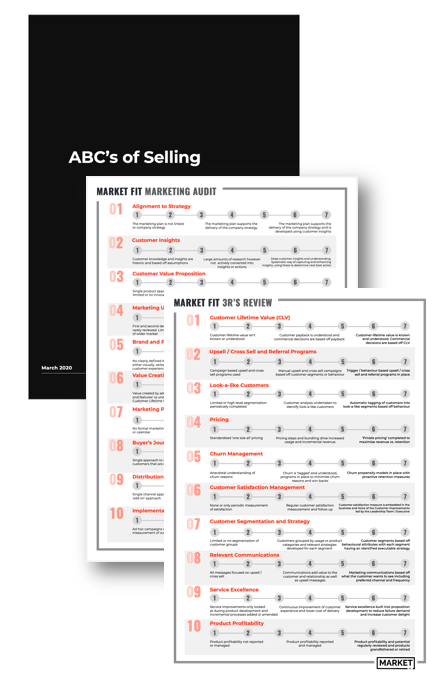Value Based vs Time Based Pricing: An Overview
As we have discussed in earlier posts, the journey to value based pricing is fraught with many pitfalls for the unwary. We have discussed the concept of the value chain; we have completed the first step by starting to rethink our services; and we have looked at how to put them into packages or bundles.
Now we are going to go into pricing in much greater detail, to determine why you should switch to value based pricing, and we’ll explore some guidelines as to how to start implementing the concept. We will also touch on some of the possible pitfalls you should be alert for when implementing value based pricing. Value based pricing, like being an accountant, is a continuous learning process, and through that learning, one continuously adds value.
What is wrong with Time Based Pricing?
Time based pricing has been around since man invented clocks, and as such, is so deeply ingrained in the minds of both the supplier of services and the customer, that it is difficult to contemplate another way of doing things. One of advantages for clients is that they are comparing apples-to-apples, which makes life easier for them, and further ingrains the concept.
Value based pricing has also been around for a long time, albeit in a different guise. Whenever someone supplied a service that was calculated on the result, or the perceived value to the customer, irrespective of how much time it took, you had value based pricing. With the growth in innovative economic theory in modern times, the concept has been formalised and expanded, and today holds the only realistic method of increasing revenue for service providers like accountants.
So what exactly is wrong with time based pricing?
- The faster and better you work, the less you get paid. The client will always want you to work less so he can pay you less.
- The client will hesitate to call you if he has a problem, or an extra service he requires, because he automatically knows it will take more time and hence more money.
- You are tempted to work longer and dumber, because it equates to more hours and more money. There is no incentive for you to work faster and smarter, thereby suffocating your skills development and that of your staff. Improvement in quality of staff does not, therefore, translate into increased revenue.
- The only way you can increase revenue, is to increase your hourly rate, and that always leads to sticky conversations with your customers, whenever the yearly increase in rates comes around.
- Someone is always willing to offer the same service for less.
The funny thing is, clients are not always expecting time based pricing. They are more concerned about the best service they can get, or rather the value you add to their business. Who are they going to call when they have a problem, when they are aware that every transaction is going to be billed by the hour or minute?
There is very little leeway in this pricing model to scale your prices and to suggest extra services, as the client will only perceive extra hours, not extra value. Constantly hiking your rates will only scare your client off, as they will constantly compare your rate to other hourly rates. You will quickly hit a price ceiling, which will be well-nigh impossible to break. Accountants always fall into the classic pricing mistake, they set price based on the input costs, price should be set based on what the customer is willing to pay and the customer value.
Some Common Obstacles Faced When Switching to Value Based Pricing
- That’s the way we’ve always done it. As discussed earlier, this attitude is extremely ingrained, and difficult to shake. By way of offering you something to think about. Think about this situation that you will have come across 100 times before. Someone connected to your network has got into a spot of bother over sales tax, with the revenue service. Through their connections they find you. Ten minutes understanding the situation and one phone call, saved this client rather a lot of money in penalties. Should you only charge for the phone call on an hourly rate? Absolutely not, you potentially saved them thousands of dollars. The perceived, and actual value to the client was far greater than the cost, on an hourly rate, of the phone call.
- All other practices charge on an hourly rate. Well then, use the value based model as something that sets you apart from your competitors. With the correct selling techniques, you will be able to convince the client of greater value: no surprises, clearly obtainable results and constant access and collaboration with you and your employees.
- How can I quote for the client when I don’t know what he wants? That in itself should raise a huge red flag. The whole basis of value based pricing is a thorough understanding of your client and what he wants, and how you will be able to achieve the value that the client perceives he wants from your services. Parameters must be defined, and there should be a clear grasp of possible future scenarios which would warrant re-negotiating price.
So why should I move to Value Based Pricing
- Profits are not dependant on time.
- Motivates your staff to produce more, more efficiently.
- You have the potential to hire better staff, as your modus operandi allows for more flexibility and a more exciting and challenging environment.
- No surprises for the client
- The client will be more willing to collaborate with you, as this does not automatically translate into extra charges.
Right, we have discussed the advantages and disadvantages of the two different methods of pricing. Now how do we actually do it? I have broken the “how to” into 3 different phases, namely: Setup, Implementation and Monitoring. We have already covered the setup in previous articles, but just to recap briefly.
Setup
- Do your homework regarding your services, remember the exhaustive list, and think carefully about your overall plan.
- Bundle your services into packages. Remember the “power of threes”.
- Cobble together a pricing committee, set your prices, and fine-tune them with your pricing committee.
- Start educating your staff and your clients about the changes and processes you are about to implement. Some clients will balk at the changes, so it would be worth your while to create an intermediate pricing structure. This is the fixed price scenario, which is halfway between hourly billing and value added pricing. It is a fixed price for a finite bouquet of services. Remember when we worked out the expected price in our structure of three prices per bundle? This would be a good basis for your fixed price model. If the client seems hesitant to take the leap to true value based pricing, you can always suggest the fixed price as an alternative. Once the client becomes accustomed to this scenario, you can slowly and gently start to ease him towards value based pricing.
Now let’s move onto phase two and three
Implementation
- Assess your client. You have to do in-depth interviews with your client to ascertain what your client needs, what his problems and concerns are, and what possible future services you could add to pre-empt concerns developing into crises. You need long-term relationships with your clients to make it possible for you to scale up your services and to retain value based clients. The customer value will be ascertained by the difference between customer perceived value of your service less customer perceived cost of those services. The best accountants are those that listen to their clients, and this goes a long way to cementing those long-term relationships you are after.
- Set the parameters of your working relationship. What is the client going to provide (my receptionist will do all the filing………), and what do you have to provide (we will do the bank reconciliations…….)? How clean is the paperwork? What are the delivery parameters for paper work? How many times haven’t you requested paperwork or answers to specific questions, only to have to wait an extra week or two before the client provides what you’ve asked for? The rules of engagement must be thrashed out. Likewise, how long are e-mail responses going to take? And most important of all, how are payments going to be made, and with what frequency (every month, every quarter, once a year, etc.)?
- Articulate the value of your services. The client must have a clear and well defined idea of the value you bring to the relationship. You have to change the client’s mind-set, by placing before them the clear value of your services. This encompasses no surprises, clear defined outcomes, etc.
- Add move value to the bundle than you are comfortable with. Find your high perceived value services and low cost of delivery and add them.
- Start Slow. Every client has their own corporate culture, and the last thing you want to do is to charge into the client’s offices like a bull in a china shop, antagonising all and sundry. Clients don’t like to leave their comfort zone. Start at the lowest level, with the secretaries, and debtors and creditor clerks. Introduce your requirements gently, and then gradually work up the chain. Above all, the client and his employees must display the willingness to accept your changes. Calculate the best and worst case scenarios of your proposed changes, and have contingency plans. It is vital to maintain constant and clear communication with your client to facilitate the ground-breaking changes you are trying to implement.
Monitoring
- Constant evaluation of the results you are achieving is vital. Become the trusted advisor, not just the technical advisor. Explain constantly what you are trying to achieve and why. Explain how it will benefit the client’s business and his bottom line.
- Keep on re-assessing your client’s needs and his perceived value of your input. Become intimately involved in his business and the challenges he faces, and last of all, continually reaffirm the value you are delivering. By being so involved, you will be in an ideal position to spot upcoming problems, and advise your client on how to solve them using your services.
I hope this series of articles has given you food for thought. To slavishly cling to your outdated pricing models will only mean the gradual shrinking of your revenue stream, as you desperately try to work harder and longer to maintain or grow your bottom line.
However, having said that, not all accounting practitioners will be willing, or able, to implement these changes. That’s fine, you know how this will play out, more competition and more price pressure.
To those of you who what to grow, I have only a couple of pieces of advice, do your homework, test and learn test and learn. Good luck you are on your way to differentiating yourself.




